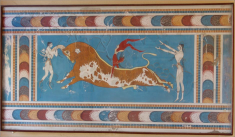Speaker
Description
We report the first measurement of the rapidity-odd directed flow ($v_1$) of multi-strange baryons ($\Xi$ and $\Omega$) in Au+Au collisions as recorded by the STAR detector at the Relativistic Heavy Ion Collider.
We focus on particle species where all constituent quarks are produced, as opposed to possibly transported, and demonstrate using a novel analysis method that the coalescence sum rule holds for hadrons with identical quark content. We examine the coalescence sum rule as a function of rapidity for non-identical quark content having the same mass but different strangeness ($\Delta S$) and electric charge ($\Delta q$). %For non-identical quark combination, a non-zero difference of directed flow, a measure of coalescence sum rule violation, has been observed, we call it directed flow splitting ($\Delta v_1$).
The difference in the directed flow of different quark and anti-quark combinations, e.g., $v_1(\Omega^{-}(sss)) - v_1(\bar{\Omega}^{+}(\bar{s}\bar{s}\bar{s}))$, is a measure of coalescence sum rule violation, and we call it directed flow splitting ($\Delta v_1$) between quarks and anti-quarks. This measurement uses the latest high statistics data sample from $\sqrt{s_{NN}}=$ 27 GeV Au+Au collisions where we take advantage of the improved event plane resolution of recently installed Event-Plane Detector (EPD). We measure $v_1$ as a function of rapidity; and then $\Delta S$ and $\Delta q$ dependence of the $\Delta v_1$-slope ($d\Delta v_1/dy$) between produced quarks and anti-quarks in Au+Au collisions at $\sqrt {s_{NN}} =$ 27 GeV and 200 GeV. The $d\Delta v_1/dy$ increases when $\Delta S$ and $\Delta q$ increase. This $d\Delta v_1/dy$ signal becomes weaker going from collision energy $\sqrt{s_{NN}}=$ 27 GeV to 200 GeV. We compare our measurements with the Parton-Hadron String Dynamics (PHSD) model + EM-field calculations.
Details
Ashik Ikbal Sheikh; Kent State University, US
https://www.kent.edu
| Is this abstract from experiment? | Yes |
|---|---|
| Name of experiment and experimental site | STAR experiment; https://www.star.bnl.gov |
| Is the speaker for that presentation defined? | Yes |
| Internet talk | Yes |
